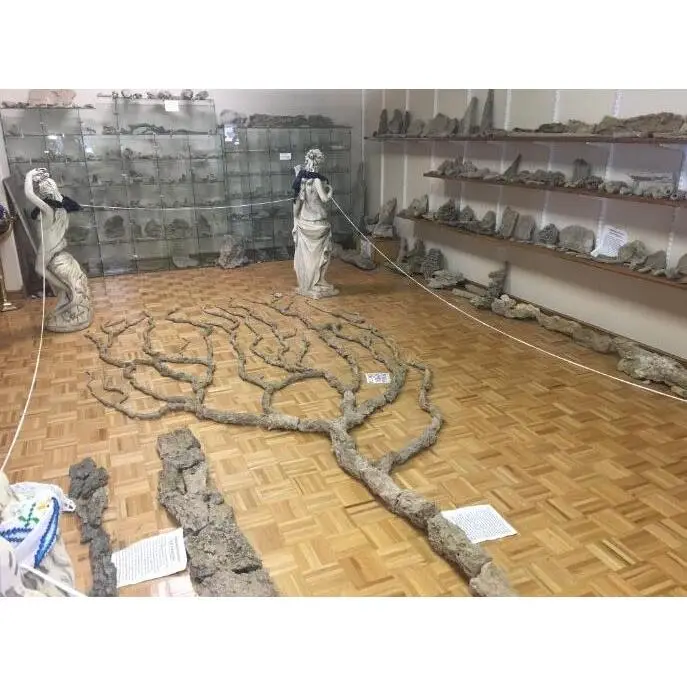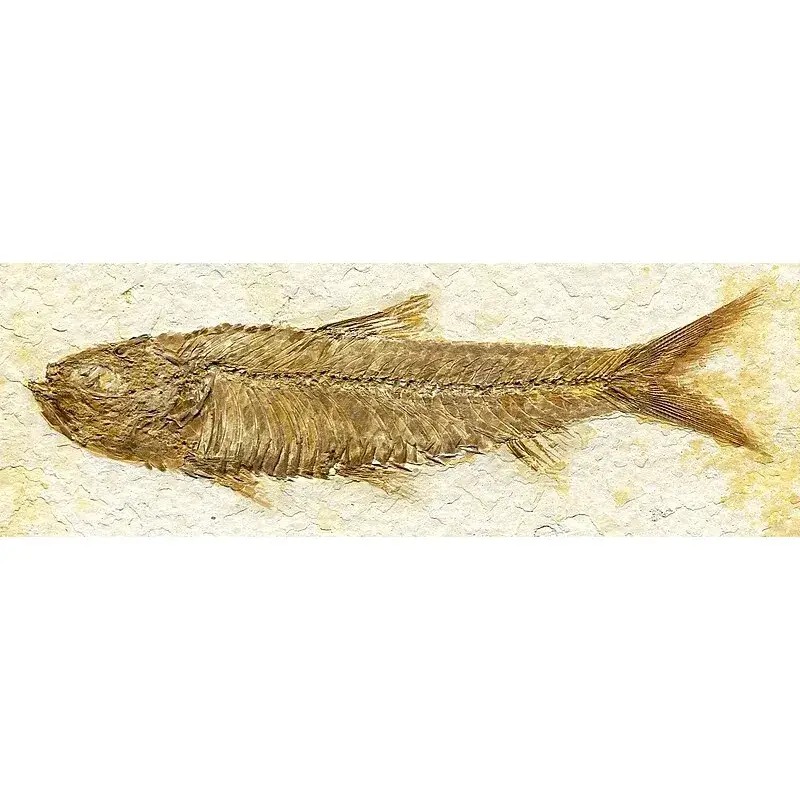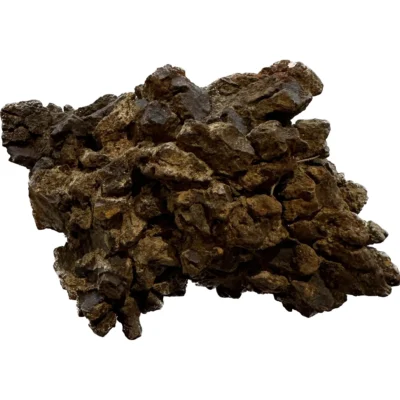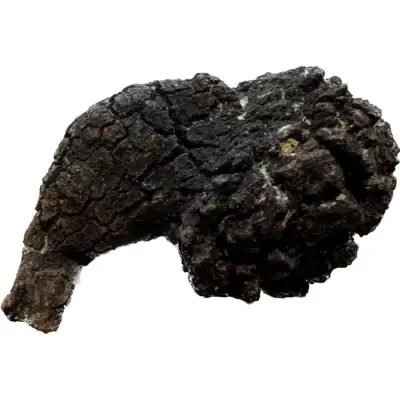Tyrannosaurus rex: the dinosaur for all
Tyrannosaurus rex, the “tyrant lizard king,” is one of the most iconic and fascinating dinosaurs that ever roamed the Earth. Its name conjures images of a fearsome predator, a giant carnivore ruling over the ancient landscapes of the Late Cretaceous period. In this extended exploration, we delve deeper into the world of T. rex, examining its anatomy, physiology, behavior, and the environment in which it lived.
Anatomy and Physiology
Skull and Teeth
The skull of Tyrannosaurus rex is one of its most distinctive features, measuring up to 5 feet (1.5 meters) in length. The skull is robust and heavily built, designed to withstand the forces generated by its powerful bite. The teeth of T. rex are large, serrated, and banana-shaped, with some of the largest teeth exceeding 9 inches (23 cm) in length. These teeth were well-suited for gripping and tearing flesh, allowing T. rex to efficiently consume its prey.
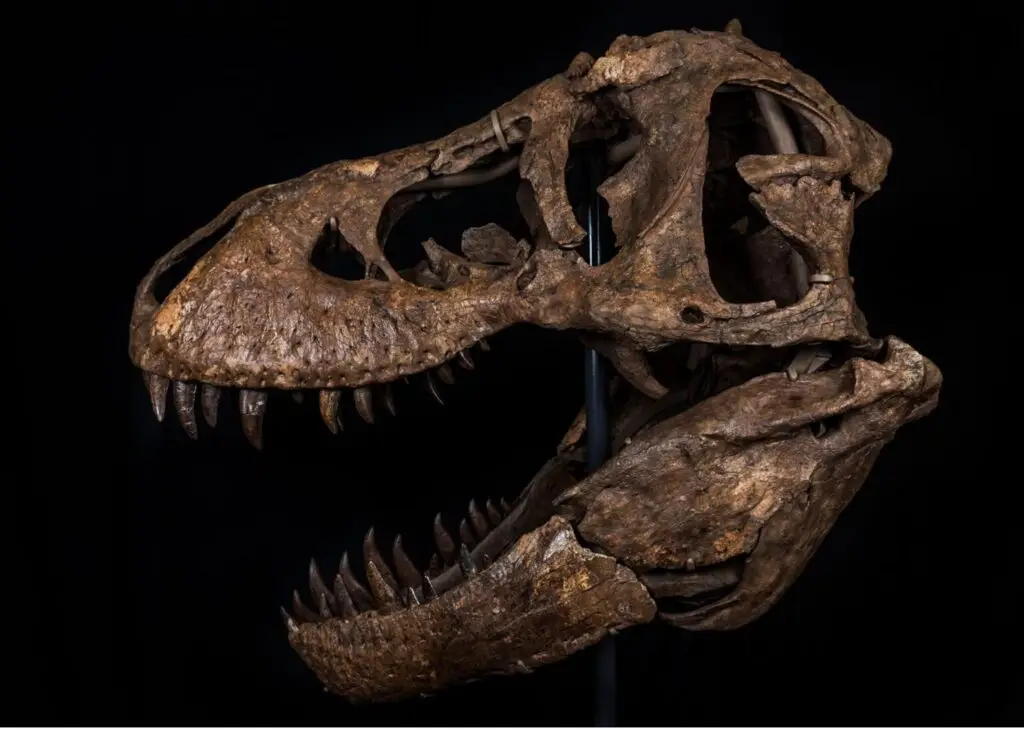
Postcranial Skeleton
The rest of the body of Tyrannosaurus rex was also impressive. It had a massive, muscular body, supported by strong, pillar-like legs. The forelimbs of T. rex were small compared to its body size, with only two fingers on each hand. Despite their small size, these arms were incredibly strong, capable of delivering a powerful grip. The hind limbs of T. rex were long and powerful, enabling it to run at high speeds when hunting or scavenging.

Tail
Tyrannosaurus rex had a long, heavy tail that served as a counterbalance to its large head and body. The tail was used for balance and stability while running, helping T. rex to maintain its agility and maneuverability. Some researchers believe that T. rex may have also used its tail as a weapon, swinging it to strike at prey or rivals.
Feeding Behavior
Tyrannosaurus rex was a carnivorous predator, feeding primarily on other dinosaurs. Its diet likely consisted of large herbivorous dinosaurs like hadrosaurs and ceratopsians, which were abundant in the ecosystems where T. rex lived. T. rex was an apex predator, meaning it was at the top of the food chain and had few natural predators of its own.
Hunting Strategies
The exact hunting strategies of Tyrannosaurus rex are still a subject of debate among paleontologists. Some researchers believe that T. rex was an ambush predator, relying on stealth and surprise to catch its prey. Others suggest that it may have been an active hunter, using its speed and agility to run down prey over short distances. It is also possible that T. rex employed a combination of hunting strategies, depending on the circumstances.
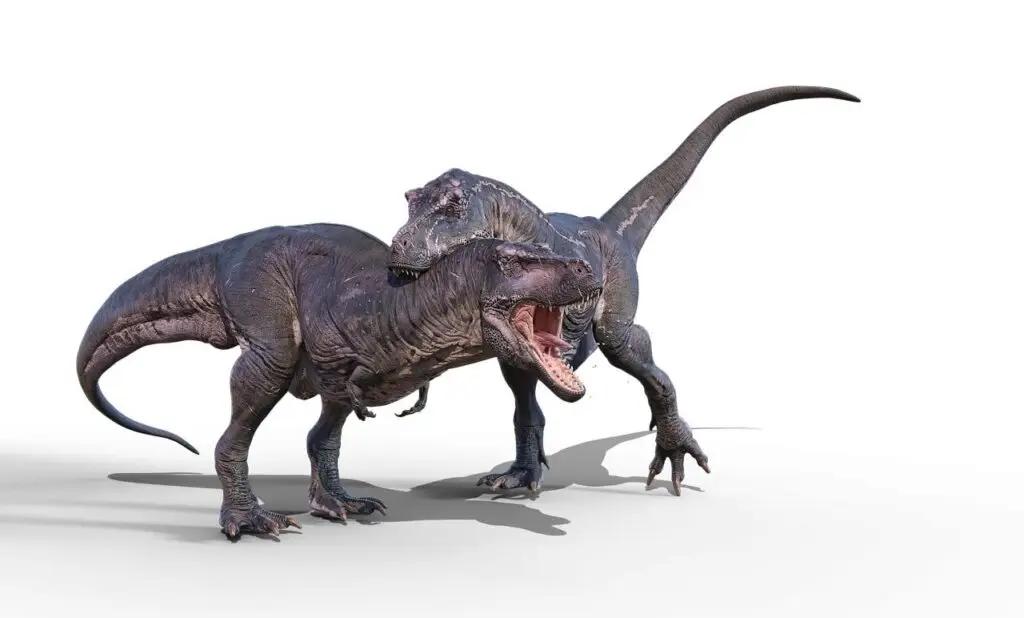
Scavenging Behavior
In addition to hunting, Tyrannosaurus rex may have also been a scavenger, feeding on the carcasses of already dead animals. Fossil evidence, such as bite marks on bones that match the size and shape of T. rex teeth, suggests that they may have scavenged for food when the opportunity arose. Scavenging would have been an efficient way for T. rex to obtain nutrients without the energy expenditure required for hunting.
Growth and Development
Tyrannosaurus rex, like all dinosaurs, went through distinct stages of growth and development throughout its life. Juvenile T. rex would have been smaller and more slender than adults, with proportionally longer limbs and a less robust skull. As they grew, T. rex individuals underwent significant changes in body size and shape, eventually reaching their full adult size.

Sexual Dimorphism
There is evidence to suggest that Tyrannosaurus rex exhibited sexual dimorphism, meaning that males and females may have had different physical characteristics. Some researchers believe that females were larger than males, while others suggest that males had more robust skulls or different proportions in their limbs. Further research is needed to fully understand the extent of sexual dimorphism in T. rex.
Environment and Habitat
Tyrannosaurus rex lived in a variety of environments, including coastal plains, river valleys, and forests, although it is most commonly associated with upland and inland habitats. The climate of the Late Cretaceous period was warmer and more tropical than today, with higher sea levels and different plant distributions. T. rex shared its environment with a diverse array of dinosaurs and other prehistoric creatures, creating a complex ecosystem.
Range
The fossil record indicates that Tyrannosaurus rex lived in what is now western North America, including parts of present-day Montana, Wyoming, South Dakota, and Alberta, Canada. These regions were characterized by diverse habitats, including floodplains, forests, and open savannas, providing ample resources for T. rex to thrive.
Coexistence with Other Dinosaurs
Tyrannosaurus rex lived alongside a variety of other dinosaurs, including herbivores like Triceratops, Ankylosaurus, and Edmontosaurus. These herbivores would have been common prey items for T. rex, and interactions between predators and prey would have been a driving force in the ecosystem. T. rex also shared its environment with other predators, such as the smaller dromaeosaurs and the massive theropod Spinosaurus.
Extinction and Legacy
The extinction of Tyrannosaurus rex and the dinosaurs at the end of the Cretaceous period marked the end of an era in Earth’s history. The cause of this mass extinction event is still a topic of debate among scientists, but the leading theory is that a massive asteroid impact in what is now the Yucatán Peninsula of Mexico caused a global environmental catastrophe. This event, combined with other factors such as volcanic activity and climate change, led to the demise of the dinosaurs and paved the way for the rise of mammals and eventually, humans.
Despite its extinction, Tyrannosaurus rex continues to captivate the imagination of people around the world. Its iconic status in popular culture, as well as its importance in scientific research, ensures that T. rex will remain a symbol of the ancient and mysterious world of dinosaurs for generations to come. Fossilized Tyrannosaurus rex teeth, claws, and bones are among the most sought-after and scientifically significant relics of the ancient world. These fossils provide invaluable insights into the anatomy, behavior, and ecology of one of the most iconic dinosaurs to have ever lived. In this detailed exploration, we will examine the characteristics of T. rex teeth, claws, and bones, as well as their importance in paleontological research.
Teeth
Structure and Function
Tyrannosaurus rex had one of the most impressive sets of teeth among dinosaurs. Its teeth were large, serrated, and banana-shaped, designed for gripping and tearing flesh. T. rex had about 50 to 60 teeth in its mouth, with the largest teeth measuring over 9 inches (23 cm) in length. These teeth were continually replaced throughout the life of the dinosaur, with new teeth growing in to replace worn or broken ones.
Fossilization
Fossilized T. rex teeth are relatively common compared to other parts of the skeleton, as teeth are often shed and replaced during an animal’s lifetime. Fossilized teeth are typically found as isolated specimens, although they can also be found in association with other T. rex fossils, such as partial skeletons or trackways. Fossilized teeth are usually well-preserved, with enamel and dentin still intact, providing valuable information about the diet and feeding habits of T. rex.
Scientific Significance
Tyrannosaurus rex teeth are of great scientific significance, as they can help paleontologists understand the biology and behavior of these ancient predators. By studying the wear patterns on T. rex teeth, scientists can infer information about the types of food they ate, how they used their teeth while feeding, and even how old the individual was at the time of death.
Claws
Structure and Function
Tyrannosaurus rex had large, curved claws on its feet, which were used for grasping and holding onto prey. These claws were strong and sharp, capable of inflicting serious injuries. T. rex also had smaller, less prominent claws on its hands, which were likely used for grasping and manipulating objects.
Fossilization
Fossilized T. rex claws are less common than teeth but are still found in some fossil specimens. Claws are often found in association with other skeletal elements, such as toe bones or foot bones. Fossilized claws are usually well-preserved, with the keratin sheath that covered the claw often fossilizing along with the bone itself.
Scientific Significance
Tyrannosaurus rex claws provide valuable information about the anatomy and behavior of these dinosaurs. The size and shape of the claws can help scientists understand how T. rex used its hands and feet, whether for hunting, climbing, or other activities. Claws can also provide clues about the biomechanics of T. rex movement and its interactions with its environment.
Bones
Structure and Composition
Tyrannosaurus rex had a robust skeleton, with large, thick bones that were well-suited to support its massive body. The bones of T. rex were hollow, a feature common to all theropod dinosaurs, which helped to reduce the overall weight of the skeleton without compromising strength. Despite being hollow, T. rex bones were still strong and durable, capable of withstanding the stresses of movement and predation.

Fossilization
Fossilized T. rex bones are among the most prized and rare specimens in paleontology. Complete or partial skeletons of T. rex are extremely rare, with most specimens consisting of fragmentary remains. Fossilized bones are typically found in sedimentary rock formations, where the bones have been buried and mineralized over millions of years. Fossilized bones can range in color from white to brown or black, depending on the minerals present in the surrounding rock.
Scientific Significance
Tyrannosaurus rex bones are of immense scientific significance, as they provide direct evidence of the anatomy and physiology of these dinosaurs. By studying T. rex bones, scientists can learn about the size, shape, and structure of various skeletal elements, as well as how these elements were arranged in the living animal. Bones can also provide clues about the age, sex, and health of the individual dinosaur, as well as information about its growth and development over time.




